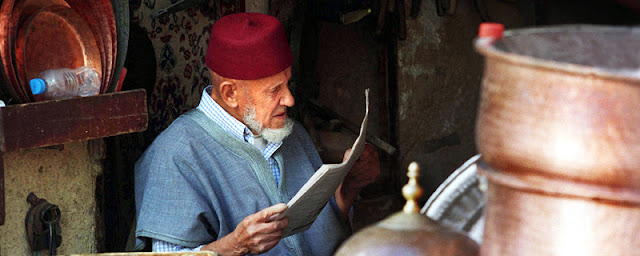A clever invention offers an easy solution for reducing humidity in the walls of traditional houses. The words “rising damp” are enough to send a chill through any owner of an ancient house. As renovators of riads or dars know, getting rid of damp patches in the walls can be time consuming, difficult and expensive. Now an invention is available in Morocco that has been used successfully in Europe to protect thousands of heritage buildings.
 |
| Riad Fes |
Architect Bertrand Tezenas, who represents Mur-tronic in Morocco, says since he moved to Marrakesh eight years ago he has been aware that damp walls in old Moroccan houses are a significant problem. “There is nothing you can do to the wall itself to treat it. Coating it with a waterproof material, or building a second wall, simply traps the humidity. There is another product, which involves drilling a hole in the wall every 15 cms and injecting it with a chemical, but you can’t do this in all cases and it is very expensive.”
 |
| Architect Bertrand Tezenas |
The Mur-tronic device consists of a black box, which can be retro-fitted.
So how does the system work? Tezenas explains that the mineral salts in groundwater are electrically charged. The Mur-tronic device emits a small electric current which changes the polarity of the moisture in the wall, so it repels rather than attracts the water beneath a building.
However, the device does not require being hooked up to mains power. “Electromagnetic energy is also the source of power for this box,” said Tezenas.
When The View from Fez expressed some incredulity, he responded, “I don’t understand exactly how the internet works, but it works. The source of power for the device is the variation of the electromagnetic field and this variation amplifies the electrical current already present in the wall, which makes the water rise higher in the walls. The device acts as a receiver of this variation and emits back a counter-variation, for lack of better word, and therefore stops the water from ascending which, then by gravity, goes down.”
Although it is too early to tell the results from the two Fez houses where Mur-tronic has been installed, Tezenas cites an example of a Marrakesh property where the moisture in the walls has been reduced from 17% to 11.5% in the six months since installation. “A correct humidity reading would be a maximum of 6%,” he said. He estimates it will reach this in another few months.
Although retro-fitting is possible, the best time to have the device fitted is during construction. And the cost? “Depending on how big the area is we need to treat, it ranges from 15,000 to 70,000 dirhams for a house, which includes monitoring after installation. It’s 30% cheaper here than in France.” And the bonus is happy neighbours – those with shared walls benefit as well.
The Details:
Bertrand Tezenas, director of Dream Haouz, can be contacted on 0667 047 969 or contact@murtronic.ma. Website: www.murtronic.ma



No comments:
Post a Comment